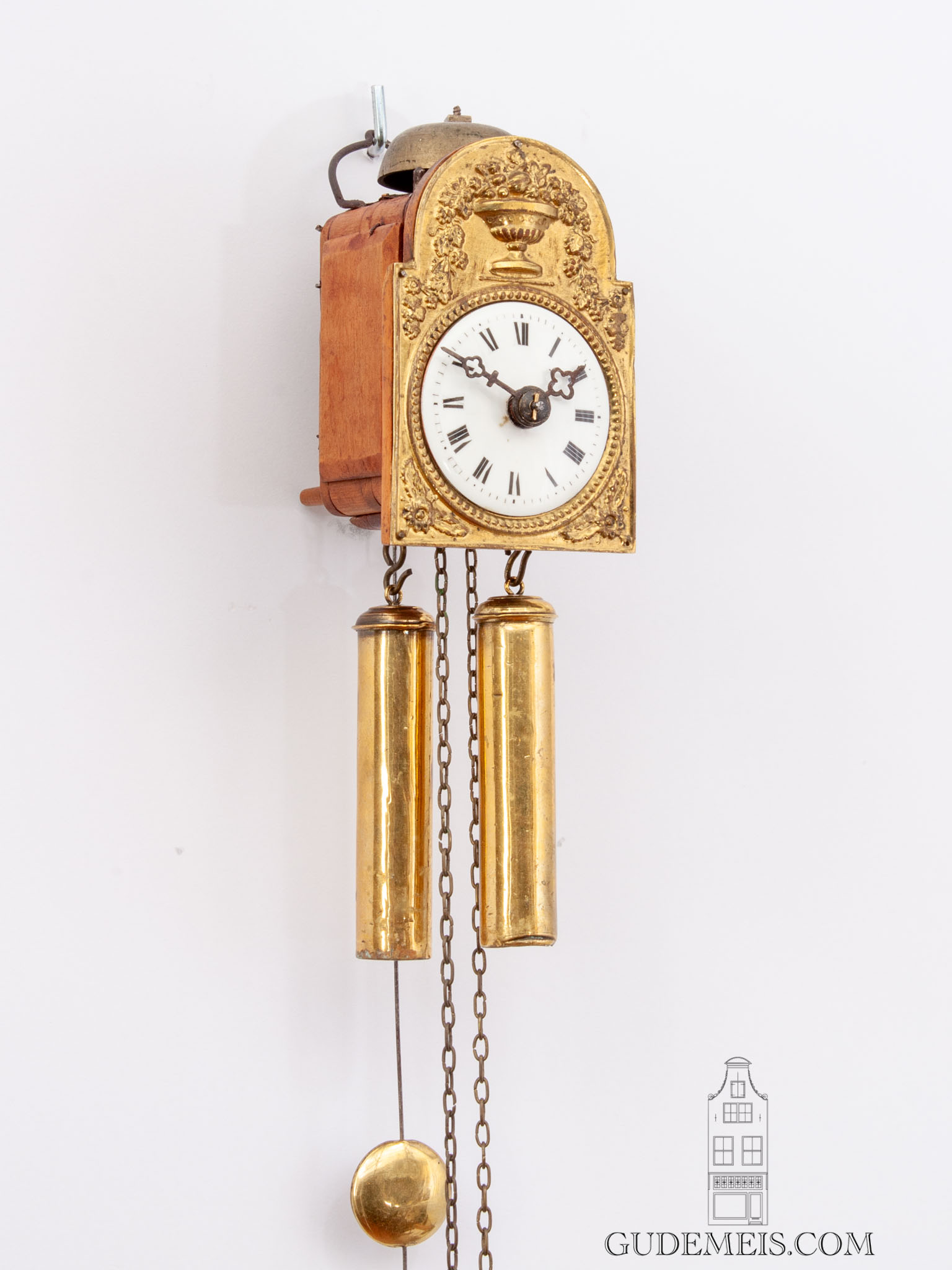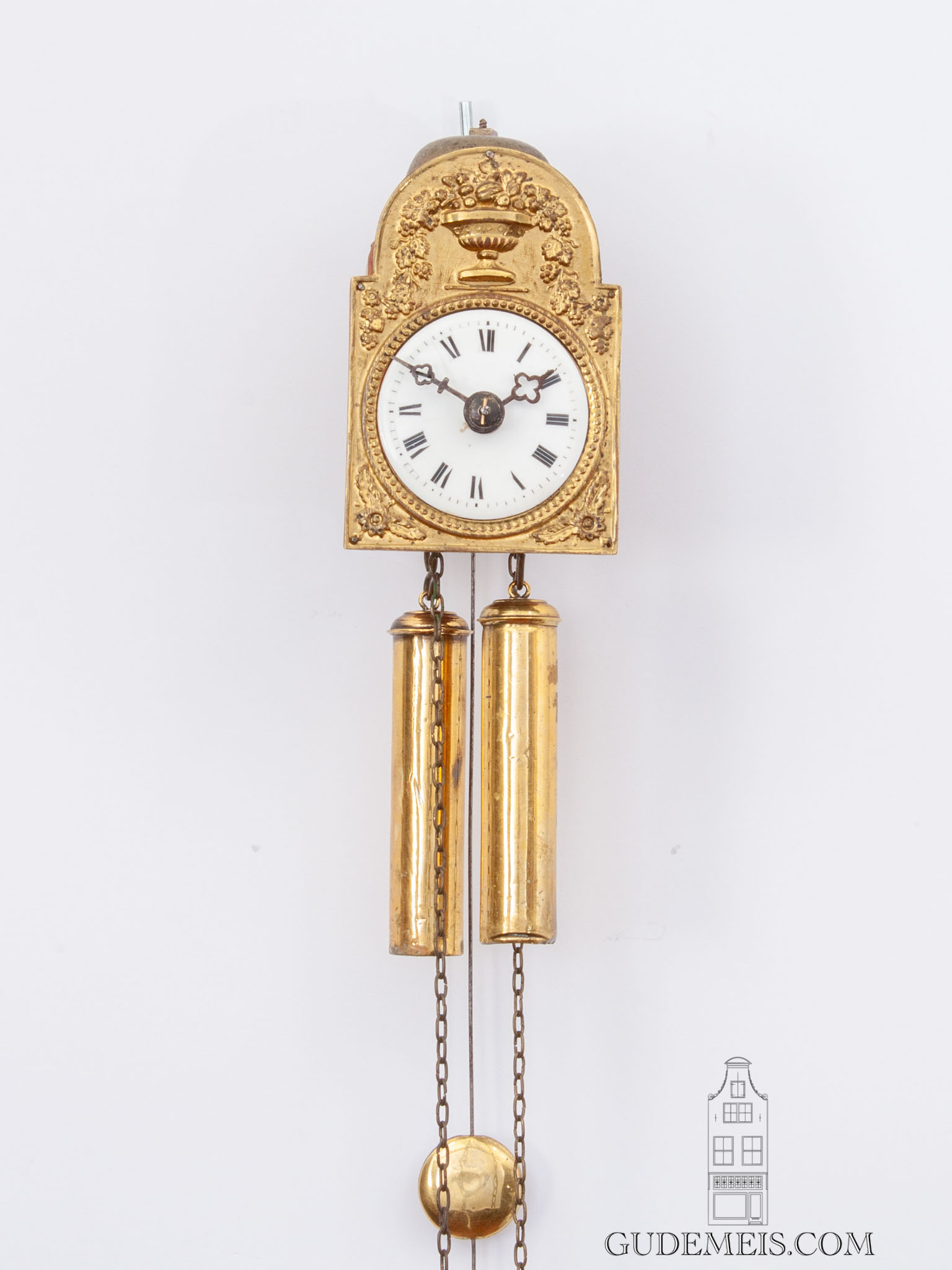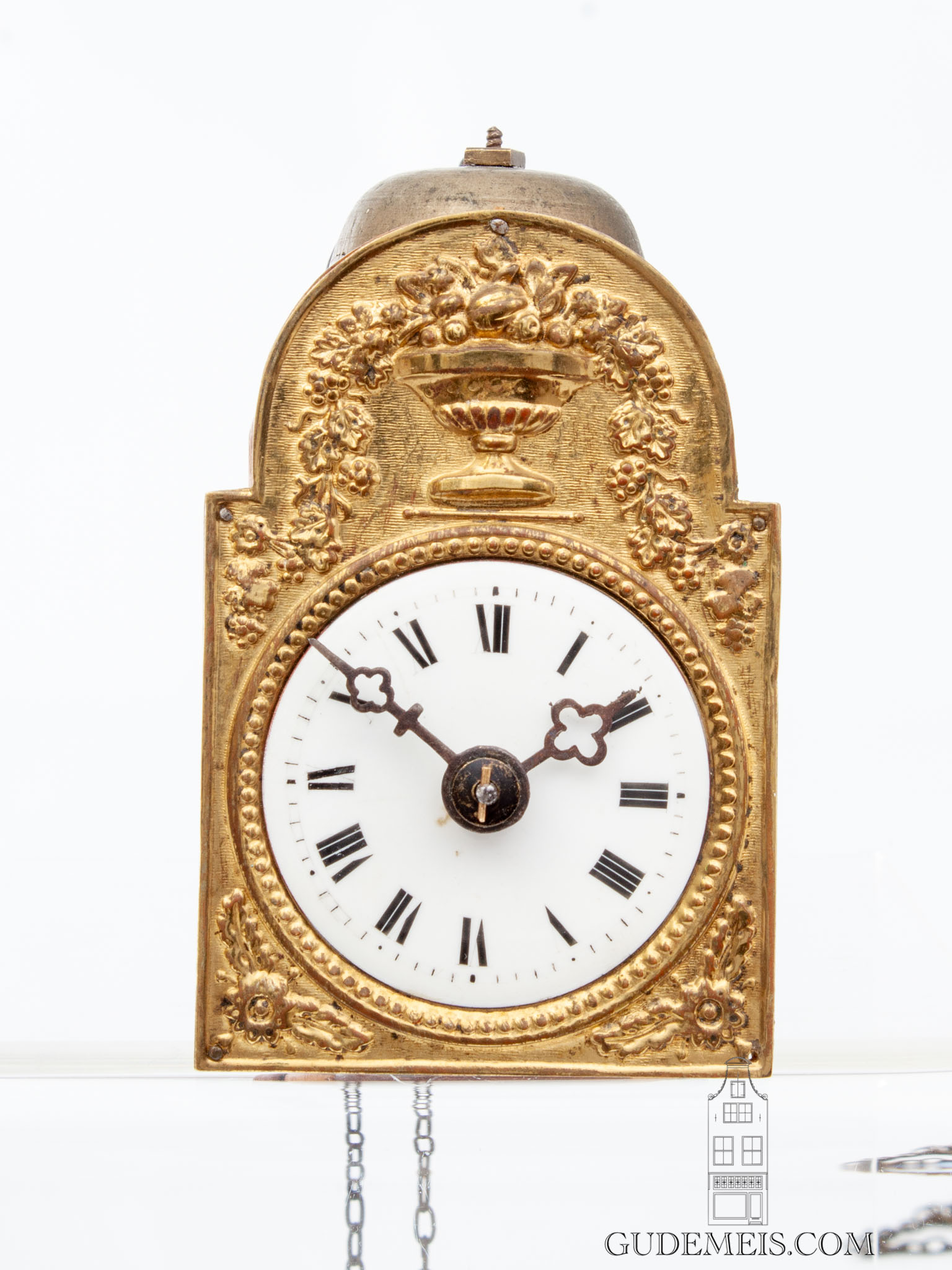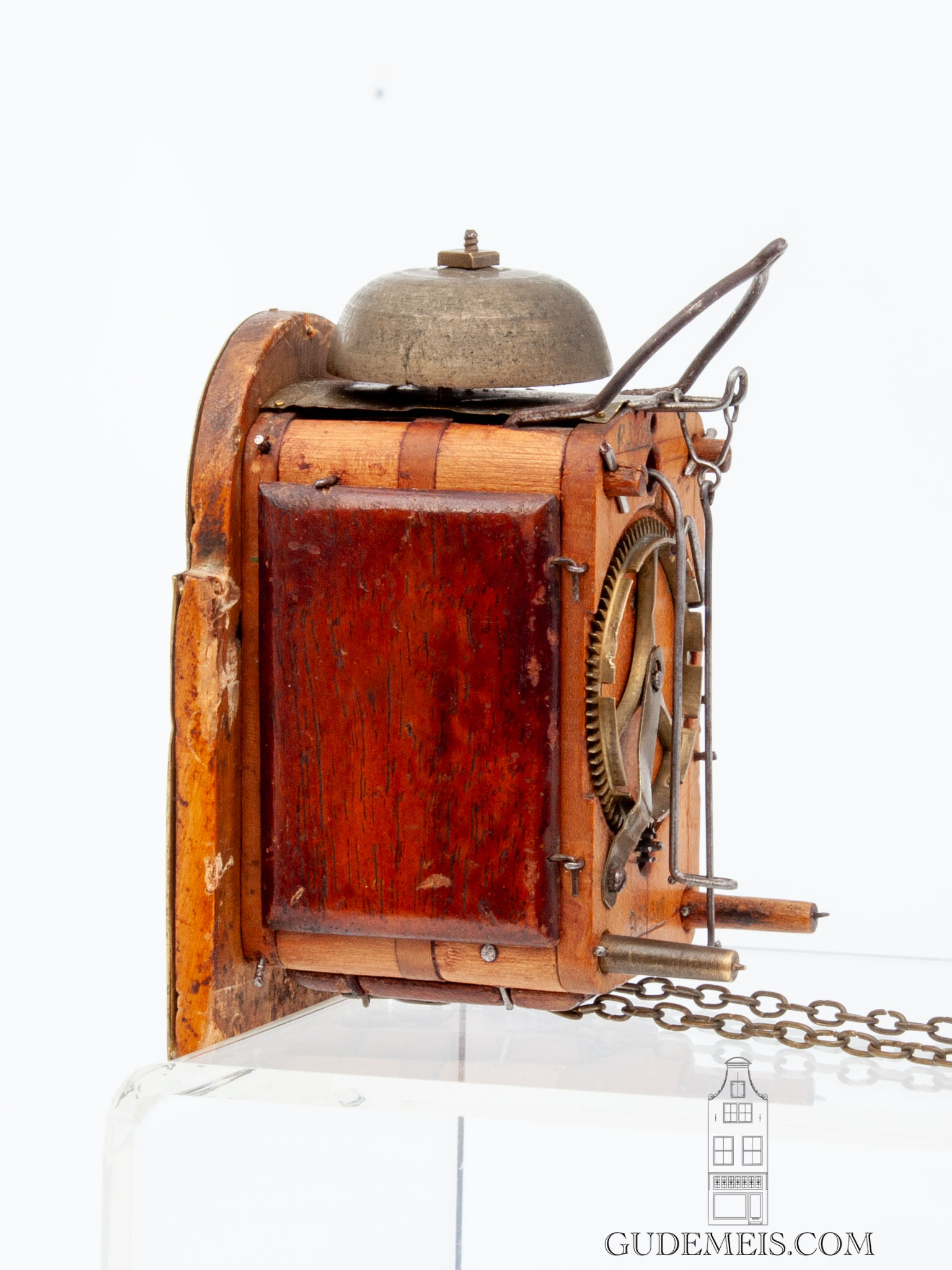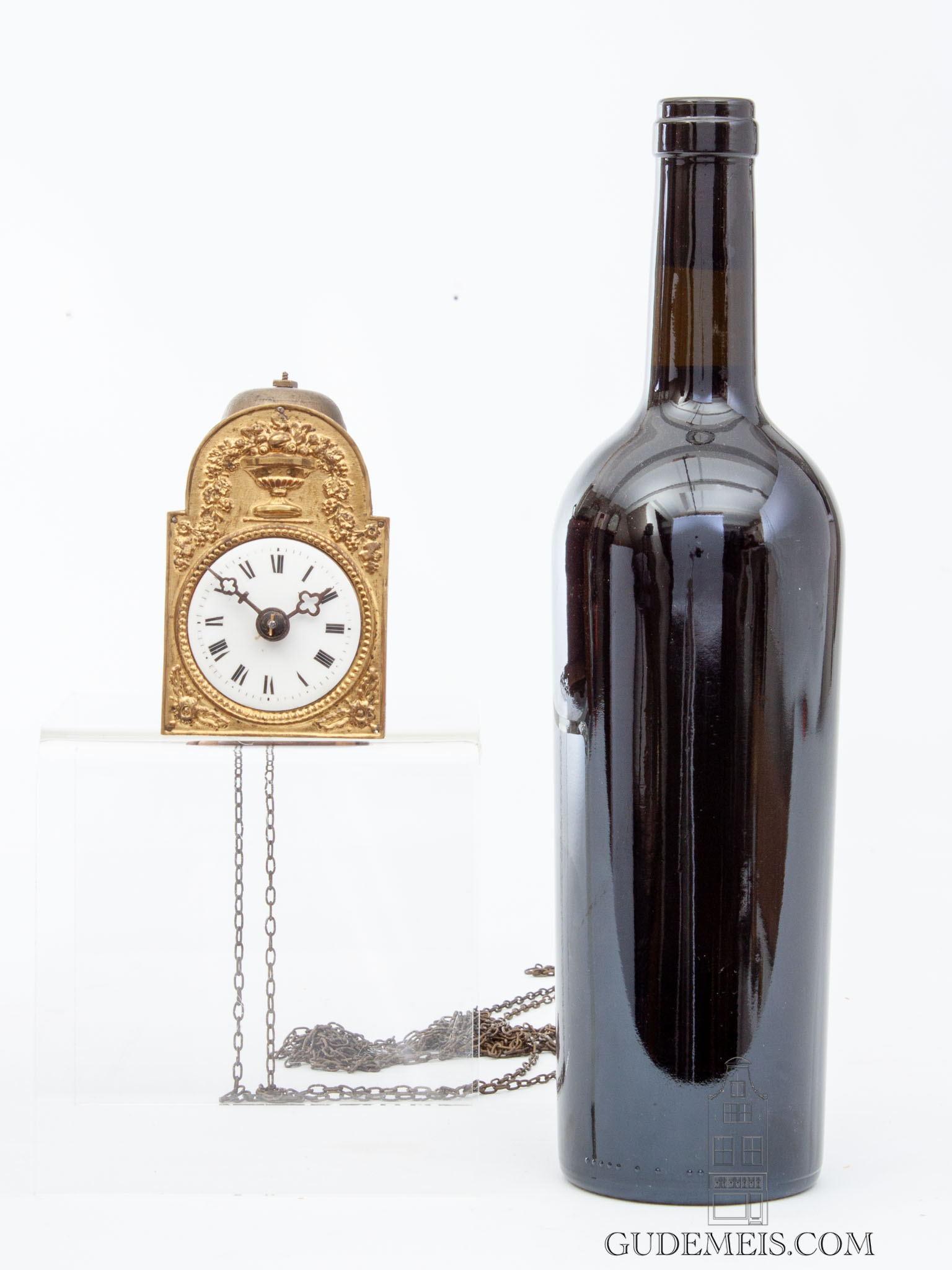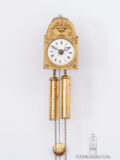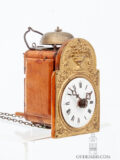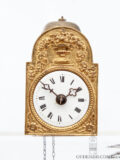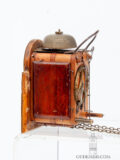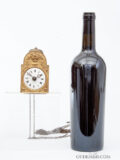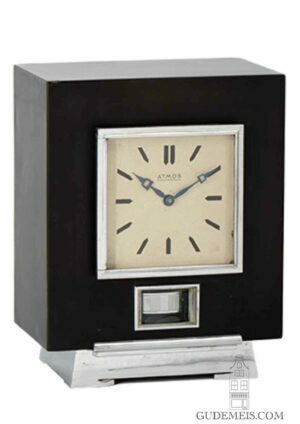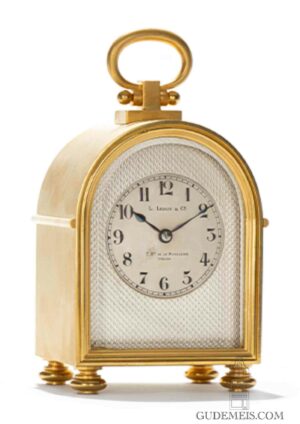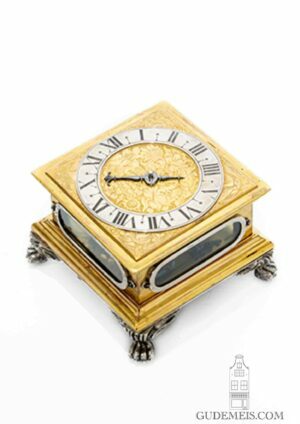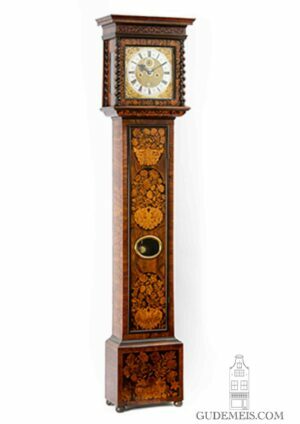A miniature German Black Forest striking Sorg wall clock, circa 1840.
Description
Joseph Sorg
Cute, small and collectable. A clockmaker named Joseph Sorg started making these small clocks around 1830 in the Black Forest. His ‘unique selling points’ must have been small size and something hard to describe that come close to ‘endearing’. Although more makers started making this these small clocks, his name stuck to the type. The amusing thing is that many people still react very enthusiastically when they see this kind of clock, which proves that these selling points still apply. Small clocks are rare by definition, because a first clock in a house would be large enough to be looked at by the inhabitants. Since clocks were expensive, not many could afford a second, which explains why they are so rare. This small clock even has striking work chiming on the hour enhancing the fun and attraction. Fun to look at and with a happy chime, this small endearing clock could be a little gem for your home.
quatrefoil hands
The 4.5-cm enamel dial has Roman numerals. The hands are of quatrefoil shape remeniscent of Gothic art and architecture. This is not strange because in the second quarter of the 19th Century is also the period of the Neo Gothic. The dial is placed in an ornate pressed brass surround showing a central flower urn and further flowers.
anchor escapement
The movement is driven by two weights and has a duration of thirty hours. It has anchor escapement in combination with a pendulum. The clock strikes the hours on a bell by means of a countwheel.
Wood case
The wood case has doors to the sides giving access to the movement. The whole is suspended by a hoop and spurs.
